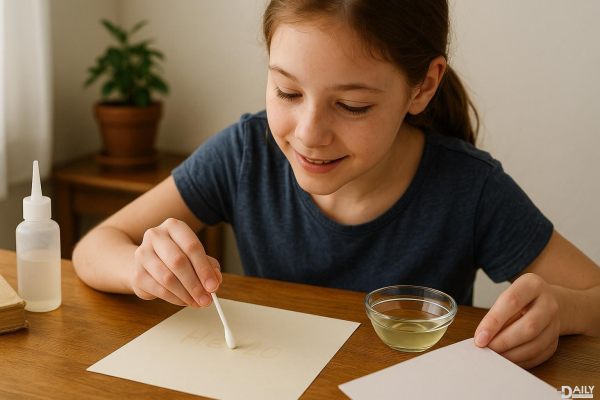Ever wanted to send a secret message that only the intended recipient can read? Making invisible ink at home is not only a fun and easy DIY project, but it’s also a great way to spark creativity and curiosity. Whether you’re planning a spy-themed party, teaching kids about science, or just looking for a cool way to leave hidden notes, invisible ink is the way to go. The best part? You probably already have everything you need in your kitchen or pantry. Let’s dive into the world of secret messages and uncover the magic of invisible ink!

Invisible ink works by using a substance that’s transparent or nearly invisible when applied to paper but becomes visible when exposed to heat, light, or a chemical reaction. The concept dates back centuries—spies, revolutionaries, and even ancient civilizations used it to communicate covertly. Today, you can recreate this fascinating technique with everyday household items. The process is simple, but the results are downright cool. Plus, it’s a fantastic way to introduce kids (or yourself) to basic chemistry principles without needing a lab coat.
Lemon juice is the OG of invisible inks. It’s acidic, which means it weakens the paper fibers where it’s applied. When heated, the weakened areas darken faster than the surrounding paper, revealing your message. Here’s how to do it: Squeeze fresh lemon juice into a small bowl, dip a cotton swab or thin paintbrush into the juice, and write your message on plain white paper. Let it dry completely—your message will disappear! To reveal it, hold the paper near a light bulb, use a hairdryer, or gently heat it over a candle flame (carefully, of course). Voilà—your secret is out!
If you’re feeling a bit more adventurous, try the baking soda and grape juice method. Mix equal parts baking soda and water to create your ink. Write your message with a brush or swab, let it dry, and watch it vanish. To reveal the message, dip a sponge or cotton ball into grape juice and gently dab it over the paper. The acid in the grape juice reacts with the baking soda, turning your message a visible purple. It’s like a mini science experiment in your kitchen!
Milk might seem like an unlikely candidate for invisible ink, but it works like a charm. Dip a brush or cotton swab into milk and write your message on paper. Once it dries, the message will be invisible. To reveal it, heat the paper using a light bulb, iron, or hairdryer. The milk’s proteins will caramelize, turning brown and making your message appear. It’s a simple yet effective method that’s perfect for beginners.
If you’re ready to level up your invisible ink game, try using a UV-reactive substance. You can buy special UV pens online, or you can make your own by mixing a small amount of laundry detergent with water. Write your message, let it dry, and then shine a UV light (like a blacklight) over the paper to reveal it. This method is perfect for those who want a more modern, high-tech approach to secret messaging.
To get the best results, use plain white paper—colored or textured paper can interfere with the visibility of your message. Write in smooth, even strokes to ensure your ink is applied consistently. When heating the paper, be patient and avoid holding it too close to the heat source to prevent burning. And if you’re using a chemical reaction method, test it on a small area first to make sure it works as expected.
Invisible ink isn’t just for secret messages—it’s a versatile tool for all kinds of creative projects. Use it to create treasure hunt clues, write personalized notes in greeting cards, or even design your own spy-themed escape room. It’s also a great way to teach kids about chemistry and the science of reactions. Plus, it’s just plain fun to watch your hidden words magically appear!
So, what are you waiting for? Grab some lemons, baking soda, or milk, and start experimenting with invisible ink today. It’s a simple, affordable, and endlessly entertaining way to add a little mystery to your life. Whether you’re a kid, a kid at heart, or just someone who loves a good DIY project, invisible ink is sure to bring out your inner spy. Happy writing—or should we say, happy disappearing!
























